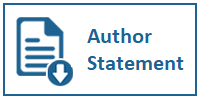Redesign The Traditional Folklore: Achieving A Sustainable Folklore For The Future Generation
DOI:
https://doi.org/10.31937/ultimart.v16i1.3131Abstract
Traditional folklore has experienced a decline in interest from generation to generation, leaving a significant question as to why younger generations are losing their interest in traditional tales. Despite the positive effects of traditional folklore on readers, this phenomenon calls for investigation. This study employs a descriptive-comparative preliminary investigation to address the decrease in interest in traditional folklore. Firstly, the present study aims to investigate the underlying reasons for the observed decline in the popularity of traditional folklore. Secondly, the study endeavors to comprehend the efforts undertaken by researchers and artists to counteract this waning interest. The previously identified determining factors will serve as guiding criteria to address the second research question. The ultimate outcome of this study will provide a comprehensive summary of the factors associated with the diminished appeal of traditional folklore among the younger generation, as well as the diverse attempts made by artists and researchers to rejuvenate this cultural heritage.
Keywords: traditional; folklore; storytelling; descriptive study
Downloads
Downloads
Published
How to Cite
Issue
Section
License
Authors retain copyright and grant the journal right of first publication with the work simultaneously licensed under a Creative Commons Attribution-ShareAlike International License (CC-BY-SA 4.0) that allows others to share the work with an acknowledgement of the work's authorship and initial publication in this journal.
Authors are able to enter into separate, additional contractual arrangements for the non-exclusive distribution of the journal's published version of the work (e.g., post it to an institutional repository or publish it in a book), with an acknowledgement of its initial publication in this journal.
Copyright without Restrictions
The journal permits the author(s) to hold the copyright without restrictions and will hold distributing rights without limitations.
The submitted papers are assumed to contain no proprietary material unprotected by patent or patent application; responsibility for technical content and for protection of proprietary material rests solely with the author(s) and their organizations and is not the responsibility of the Ultimart: Jurnal Komunikasi Visual or its Editorial Staff. The main (first/corresponding) author is responsible for ensuring that the article has been seen and approved by all the other authors. It is the responsibility of the author to obtain all necessary copyright release permissions for the use of any copyrighted materials in the manuscript prior to the submission.















